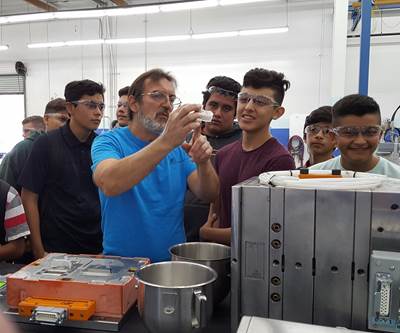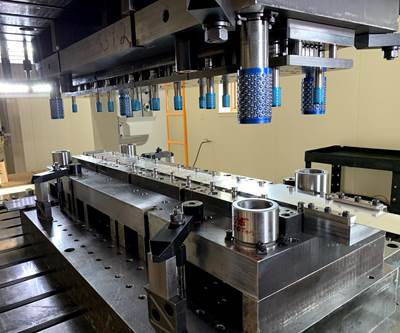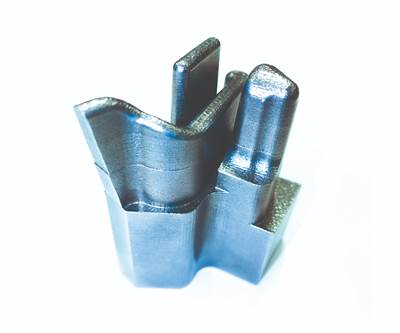In Moldmaking, Mantle Process Addresses Lead Time and Talent Pool
A new process delivered through what looks like a standard machining center promises to streamline machining of injection mold cores and cavities and even answer the declining availability of toolmakers.
Is the way injection molds are made getting ready to change? Today, mold cores and cavities are made on CNC machining centers; they are milled out of tool steel. And they will almost entirely continue to be made that way for some time to come.
But a very different means of making cores and cavities that has now fully come to market still uses a CNC machining center — albeit a modified one — and still works in tool steel — albeit initially in a non-solid form. The California-based startup Mantle is now out of beta testing and has begun shipping the production version of its “TrueShape” system for rapid, streamlined creation of injection mold tooling.
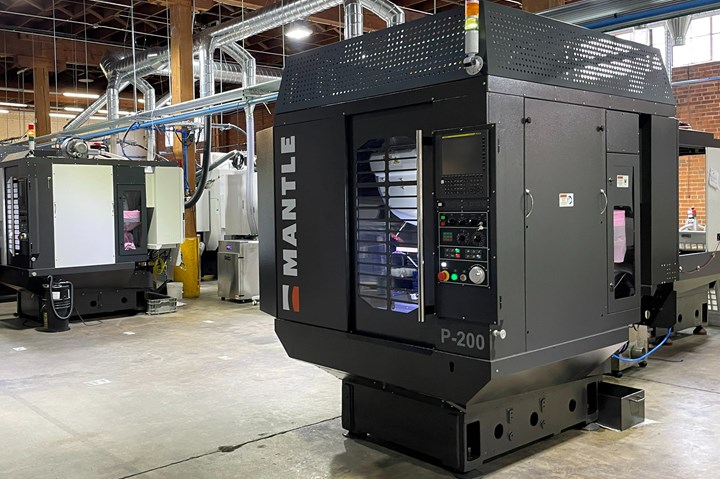
The Mantle process rapidly 3D prints and machines mold tooling made from steel, using a machining center that has been modified to incorporate the metal paste layering.
The company’s process starts with steel in a paste form and is enabled by 3D printing. It works this way: Metal paste developed by Mantle is 3D printed and CNC machined in a single operation, and then through controlled sintering becomes a fully dense steel mold core or cavity, in material equivalent to H13 or P20. Rough milling and EDM are avoided in this process, as is drilling of the cooling lines, which in TrueShape can easily be 3D printed conformal to the tool geometry.
Tool performance is equivalent to a mold made traditionally (one molder, Tessy Plastics, has taken a TrueShape mold past 1.65 million cycles), but the pacing is much faster: Printing and sintering of a core and cavity take just two to three days, compared to the several weeks of lead time more commonly associated with injection molds. The system consists of machine, software, furnace and material — all supplied by the company — and a video at gbm.media/mantle offers more detail about the operation of the Mantle moldmaking process.
Ted Sorom is Mantle’s cofounder. He says the TrueShape process competes against conventional moldmaking on both cost and time, but time savings are proving to be more significant for driving adoption and potentially transforming how tooling is developed. He expected cost to be the prime factor, but the company’s findings so far reveal something different.
Sorom explains: “For large OEMs [making plastic parts], the cost of tooling is already factored in. They expect it.” By contrast, he says the lead time for molds is a factor increasingly slipping out of their control, affecting how quickly they can adapt and innovate. Mantle’s process answers the mold lead time challenge by providing a production tool so quickly as to eliminate the need for a prototype tool (perhaps machined from aluminum) by eliminating the distinction between production and prototype tooling.
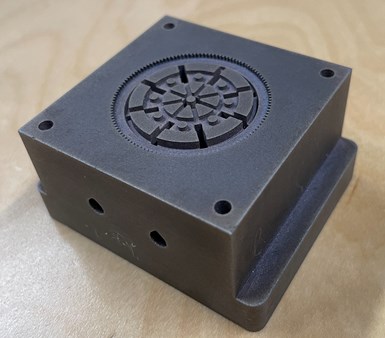
An example of a mold tool made from the Mantle process. The process produces mold tooling suitable for production-scale injection molding of plastic parts. Precise details are possible through CNC cuts that complement the 3D printing. Watch video about the process at gbm.media/mantle.
Another Mantle leader, Chief Commercial Officer Paul DiLaura, explains the consequence: “We offer time savings through faster validation,” he says, whether that is validating a fully new design or a design change. Where there is a validation requirement for plastic parts, even a small design change might introduce a major delay.
DiLaura quotes a beta user, Nicolet Plastics, saying one of this company’s leaders noted this difference with the Mantle system: “It lets us get a production tool in prototype time.” This enables validation of both design and process simultaneously. The fast moldmaking “de-risks production,” DiLaura says. “If the part design works, then you begin production with the same tool.”
Sorom notes the time to make a mold with this system is not only shorter, but more predictable as well. This led to another discovery: TrueShape is also an estimating tool. “We know exact time and material use,” he says. “Job quoting is much easier” — an advantage pointed out to Mantle by early users.
But the most significant advantage of the TrueShape system might relate to the people involved in moldmaking, including toolmakers and plastics engineers. These skilled personnel are, of course, still needed.
Someone has to design the mold; someone has to finish, fit and build the mold after the core and cavity are made. TrueShape’s solution can eliminate roughing, EDM and prototyping — not people. But as DiLaura points out, it can allow those people to do more.
Nicolet Plastics is an example of a company able to benefit from this, he says. The injection molder relies on an in-house toolmaking department with experienced team members. Any retirements from this team would likely cause in-house toolmaking capacity to decline, due to the potential difficulty of finding a suitable replacement toolmaker.
Streamlining the process — through easier quoting for engineering and fewer steps in moldmaking — amplifies the capability of knowledgeable people by freeing some of their attention and time. Thus, even if the toolmaking talent pool decreases, the remaining team members might still deliver just as many molds.
Related Content
How to Start a Swiss Machining Department From Scratch
When Shamrock Precision needed to cut production time of its bread-and-butter parts in half, it turned to a new type of machine tool and a new CAM system. Here’s how the company succeeded, despite the newness of it all.
Read MoreA New Milling 101: Milling Forces and Formulas
The forces involved in the milling process can be quantified, thus allowing mathematical tools to predict and control these forces. Formulas for calculating these forces accurately make it possible to optimize the quality of milling operations.
Read MoreVolumetric Accuracy Is Key to Machining James Webb Telescope
To meet the extreme tolerance of the telescope’s beryllium mirrors, the manufacturer had to rely on stable horizontal machining centers with a high degree of consistency volumetric accuracy.
Read MoreHow to Reduce Cycle Times by 70% and More on Your Existing CNCs and Dramatically Improve Tool Life Too
By employing advanced high efficiency milling techniques for the entire machining routine, SolidCAM’s iMachining technology can drastically reduce cycle times while vastly improving tool life compared to traditional milling.
Read MoreRead Next
A Day Makes a Difference in Changing Perceptions
Earnest efforts by shops like this one help spread Manufacturing Day’s message about the realities of modern manufacturing and the opportunities associated with a career in the field.
Read MoreUse Your Machinists to Make Dies
By systemizing die making into repeatable steps, Dies Plus, a division of Otto Engineering, is using its machinists to effectively make dies. This solution relies on a paperless color-coding system to convey the tolerances machinists need to hit in order for tool and die makers to do the final fitting.
Read MoreIs 3D Printed Tooling a Solution for Die Casting?
After tackling the 3D printer, material and design, there's still one challenge left for Exco Engineering: convincing customers.
Read More
.jpg;width=70;height=70;mode=crop)


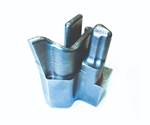







.png;maxWidth=300;quality=90)




.png;maxWidth=300;quality=90)






